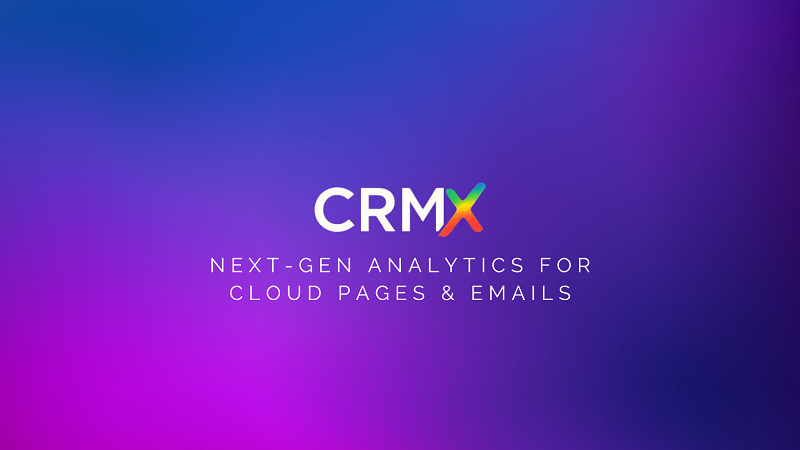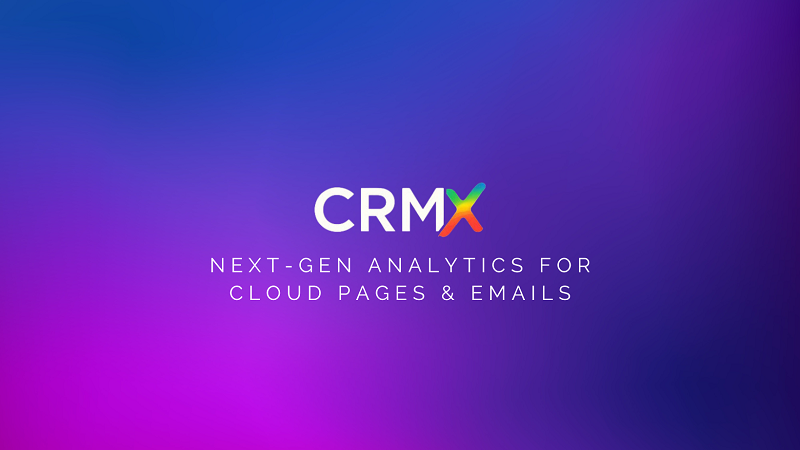A/B testing is a must-have in any serious email marketing strategy — especially if you’re running campaigns through Salesforce Marketing Cloud (SFMC).
But here’s the problem: traditional A/B testing tells you which version performed better, not why it won.
That’s where email heatmaps change the game.
In this post, we’ll walk through how to combine A/B testing and heatmaps in Salesforce Marketing Cloud using CRMx, so you can not only see the winning version — but understand exactly what made it win.
🔍 Why Traditional A/B Testing Falls Short
In SFMC, a standard A/B test gives you:
CTR (Click-Through Rate)
Conversion rate
Opens and bounces
That’s helpful, but it doesn’t answer:
Which sections got the most attention?
Did subscribers interact with the main CTA?
Were clicks spread evenly or concentrated in one area?
Did mobile users behave differently from desktop users?
Without that visual context, you’re still guessing.
🧠 How Email Heatmaps Transform A/B Testing
An email heatmap is a visual overlay showing where subscribers clicked, using:
🔴 Hot zones for high clicks
🟡 Medium engagement areas
🔵 Cold zones with little or no interaction
When applied to both versions of an A/B test, heatmaps let you compare click patterns side-by-side.
🛠 Step-by-Step: A/B Testing with CRMx Heatmaps in Salesforce
1. Set Up Your A/B Test in SFMC
Decide what you want to test:
CTA placement (top vs. bottom)
Layout design
Number of product images
Button color or copy
2. Connect CRMx to Capture Click Data
CRMx integrates directly with SFMC using Job IDs, pulling in click behavior from each version automatically.
3. Send Your Campaign
Run your test as usual — SFMC sends both versions to your test audience.
4. View Heatmaps for Both Versions
After the send, CRMx generates interactive heatmaps for each version:
See which areas drew the most clicks
Spot cold zones where engagement dropped
Compare click percentages for CTAs, images, and text links
5. Analyze & Interpret the Differences
Ask:
Did one version drive more clicks to the main offer?
Did one layout guide the reader’s eye more effectively?
Were there distractions in the losing version?
How did device type influence results?
6. Apply the Insights
Use the visual proof to:
Roll out the winning design across campaigns
Adjust CTA placement based on hotspot data
Redesign underperforming content blocks
Continue testing with new hypotheses
🎯 Example: Heatmap-Driven A/B Test Insight
Test Goal: Increase clicks to a “Shop Now” button.
Version A: CTA at the top, product grid below.
Version B: Product grid first, CTA at the bottom.
Heatmap Results via CRMx:
Version A showed 65% of clicks on the CTA (hot zone).
Version B showed scattered clicks across products, with only 20% hitting the CTA.
Action: Adopt Version A’s layout for all promo campaigns.
📈 Why CRMx Is the Perfect Heatmap Tool for SFMC A/B Testing
🔥 Side-by-side heatmap overlays for quick comparisons
📊 Click percentage ranking for every clickable element
🧪 Test insights by device (mobile vs. desktop behavior)
💼 Easy-to-share visuals for team and stakeholder reports
With CRMx, you don’t just see which A/B test version won — you understand why it worked.
✅ Final Thoughts
In email marketing, knowing what works is good — but knowing why it works is better.
Heatmaps give you the visual insight to back every decision with real user behavior data.
When you combine A/B testing in SFMC with CRMx heatmap analytics, you go from trial-and-error to strategic, repeatable success.
📬 Test smarter. See clearer. Win bigger.





